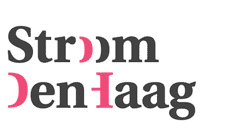InfoArcadia
Manifestation about information design - a project byMaarten de Reus and Ronald van Tienhoven
A well-designed graph tells us more about a specific phenomenon or situation, than any text can. The design that conveys the information (interface) makes is easier for our brain to absorb the facts. In the past charts, graphs and tables were already used to make information more clear. Today, information design is a (graphic) speciality, which incorporates aspects of marketing strategies, public relations en technical manipulation. In the old days the encyclopaedia structured the path form A to Z. Now we have to find our own way using modern search- and navigation systems.
The manifestation InfoArcadia consisted of an exhibition and a conference. The exhibition was build up like a three-dimensional type page, CD-ROM or web page. The visitor could find or lose his own way in the forest of information. He was confronted with five different forms of presentation, which were the building stones of the exhibition:
Visuals - Strong images, that speak for themselves.
Demo's
- Navigational systems, that require participation. Spoken columns -
The spoken word. Views of the participating artists and experts: video
registrations and sound bites.
Printed matter - Words in print.
Flyers - Flyers are the connecting links in the exhibition. Who collects all the flyers, collects a catalogue.
The designer determines indirectly how we will understand data, how we will perceive certain events, what opinions we will form and even what we will consume. How can the interface make information more -or less- accessible?
Lectures, symposium and publication
Under the title 'Visual Language' three lectures took place about information design. Also, a symposium was organised around the subject, and the publication InfoArcadia was released.
A list of participants can be found here.
- 25 Jan '00 - 22 Apr '00
- Spui 193-195, The Hague































